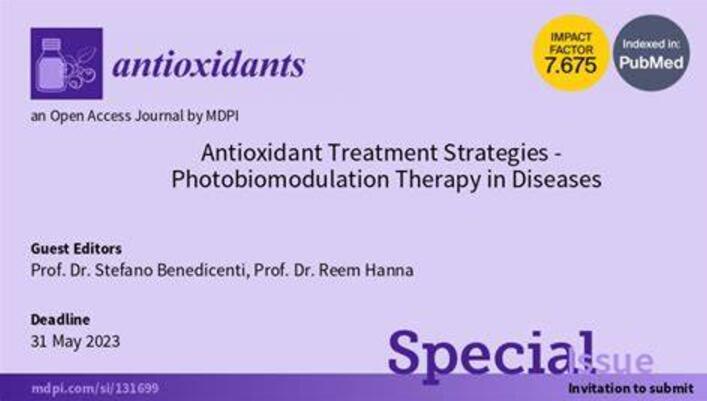Coenzyme Q10 Improves the Post-Thaw Sperm Quality in Dwarf Surfclam Mulinia lateralis
IF 6
2区 医学
Q1 BIOCHEMISTRY & MOLECULAR BIOLOGY
引用次数: 0
Abstract
Previous studies have shown that post-thaw sperm performance is affected by multiple stressors during cryopreservation, such as those induced by physical, chemical, mechanical and physiological changes. One of these is the balance disturbance between the antioxidant defense system and reactive oxygen species (ROS) production. This study investigated whether this disturbance could be alleviated by the addition of different antioxidants to cryoprotective solution [8% dimethyl sulfoxide (DMSO) in 1 µm filtered seawater] optimized for the sperm in dwarf surf clam Mulinia lateralis, the model bivalve species used in many different types of studies. Results showed that the addition of 20 μM coenzyme Q10 (Q10) to 8% DMSO achieved a D-stage larval rate similar to that of the fresh control at a sperm-to-egg ratio at least 50% less than the 8% DMSO treatment alone. The addition of other antioxidants (glycine, melatonin and polyvinylpyrrolidone) did not have any positive effects. The improvement in post-thaw sperm quality by Q10 could be due to its ability to significantly decrease ROS production and lipid peroxidation and significantly increase the motility, plasma membrane integrity, mitochondrial membrane potential, acrosome integrity, DNA integrity and activities of catalase and glutatione. In this study, 37 fatty acids (FAs) were quantified in dwarf surf clam sperm, with 21 FAs being significantly impacted by the cryopreservation with 8% DMSO. Thirteen of these 21 FAs were changed due to the addition of 20 μM Q10 to 8% DMSO, with approximately half of them being improved significantly toward the levels of fresh control, while the remaining half extended further from the trends shown with 8% DMSO treatment. However, no significant difference was found in the percentage of each FA category sum and the ratio of unsaturated/saturated FAs between the two treated groups. In conclusion, the antioxidant Q10 has shown the potential to further improve the sperm cryopreservation technique in bivalves.辅酶 Q10 提高矮尖吻鲈解冻后的精子质量
以往的研究表明,精子解冻后的表现会受到冷冻保存过程中多种应激因素的影响,如物理、化学、机械和生理变化引起的应激因素。其中之一就是抗氧化防御系统与活性氧(ROS)产生之间的平衡失调。本研究调查了在针对矮海蛤精子优化的低温保护溶液[8%二甲基亚砜(DMSO)加 1 µm 过滤海水]中添加不同的抗氧化剂是否能缓解这种干扰,矮海蛤是许多不同类型研究中使用的双壳类动物模型。结果表明,在 8%的二甲基亚砜中添加 20 μM 辅酶 Q10(Q10)后,D 期幼虫率与新鲜对照相似,但精子与卵子的比率比单独使用 8%的二甲基亚砜处理至少低 50%。添加其他抗氧化剂(甘氨酸、褪黑素和聚乙烯吡咯烷酮)没有任何积极效果。Q10 能改善解冻后精子的质量,可能是因为它能显著减少 ROS 的产生和脂质过氧化,并能显著提高精子的运动能力、质膜完整性、线粒体膜电位、顶体完整性、DNA 完整性以及过氧化氢酶和谷胱甘肽的活性。在这项研究中,对矮海蛤精子中的 37 种脂肪酸(FAs)进行了量化,其中 21 种脂肪酸在使用 8% DMSO 进行冷冻保存后受到了显著影响。在这 21 种脂肪酸中,有 13 种因在 8% DMSO 中添加 20 μM Q10 而发生了变化,其中约有一半向新鲜对照组的水平明显改善,而剩下的一半则在 8% DMSO 处理后呈现出进一步扩展的趋势。不过,在不饱和/饱和脂肪酸的百分比和比例方面,两个处理组之间没有发现明显差异。总之,抗氧化剂 Q10 已显示出进一步改进双壳类动物精子冷冻保存技术的潜力。
本文章由计算机程序翻译,如有差异,请以英文原文为准。
求助全文
约1分钟内获得全文
求助全文
来源期刊

Antioxidants
Biochemistry, Genetics and Molecular Biology-Physiology
CiteScore
10.60
自引率
11.40%
发文量
2123
审稿时长
16.3 days
期刊介绍:
Antioxidants (ISSN 2076-3921), provides an advanced forum for studies related to the science and technology of antioxidants. It publishes research papers, reviews and communications. Our aim is to encourage scientists to publish their experimental and theoretical results in as much detail as possible. There is no restriction on the length of the papers. The full experimental details must be provided so that the results can be reproduced. Electronic files and software regarding the full details of the calculation or experimental procedure, if unable to be published in a normal way, can be deposited as supplementary electronic material.
 求助内容:
求助内容: 应助结果提醒方式:
应助结果提醒方式:


